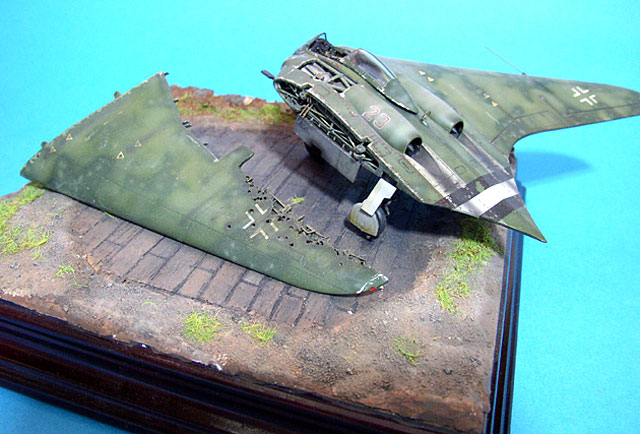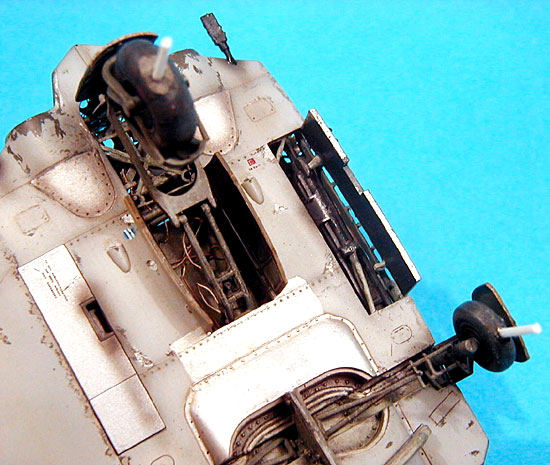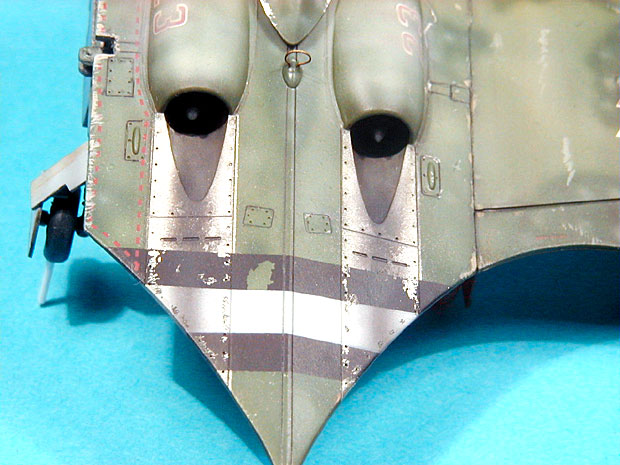|
Horton Ho 229
by Francisco Carlos Soldán
Alfaro
|

|
|
Horton Ho 229 |

HyperScale is proudly supported by
Squadron.com
In the mid 1930s, the Horten brothers initiated a
series of studies on airplanes that lacked tail unit (empennage). These
studies included from gliders to designs of fighters.
At the end of 1940, the RLM sent a requirement to which the brothers
replied with the model Horten IX. The RLM gave their approval to the
design and began the phase of preproduction and testing making the Horten
IX V1, like glider to prove the flight characteristics, and the V2
motorized with two Jumo 004B. Unfortunately, this model crashed with test
pilot Erwin Ziller at the controls.
At the end of the war, the allies opportunely found several incomplete
aircraft and several in process of construction of this wonderful fighter.
The Ho 229 fighter had advanced beyond conception.
Revell's 1/72
Scale Ho 229
|
Astonished by this machine, I decided to construct the magnificent Revell
kit in 1/72 scale, but still trying to show the complex internal structure
despite the small scale. The construction of Horten IX was the work of
Gothaer Wagonfabrik, specialist in constructing gliders with tubular
internal structure.

The Horten IX really was no more than a maze of
welded plywood tubes, covered with a variety of materials.
In order to simulate this I decided to mount kit with
a disassembled wing, and to reconstruct the Juno 004 motor on the port
side from scratch. On the other side, the disassembled wing would exhibit
"battle" damages.
Assembly
The majority of the work was to reconstruct the
mid-fuselage with scrap plastic and Evergreen. For the cockpit I used the
magnificent the Eduard photo-etched set. In the separated wing I simulated
the internal structure and the fuel tank. I built the Jumo 004 from
scratch with sections of plastic and cable.
I chose, as always, an operational painting scheme.
I painted the upper surfaces in RLM 82 with irregular
spots in speckled RLM 81 and in 02. In order to simulate heavy weathering,
I applied layers of heavily thinned paint with the airbrush and, later,
washed the surface with oils.

The lower surfaces were painted in numerous shades of
RLM 76.
All the interiors are in RLM 02. The RV (ReichVerteidigung)
band was painted with the assistance of self-adhesive masks.
To simulate scorching and the loosening of paint,
with an X-Acto blade was scraped carefully and selectively along the rear
fuselage surfaces.

The pitot tube was made using sections of hypodermic
needles. The anti-aircraft damage to the wings was depicted by thinning
the plastic with a minidrill and making some holes. The destroyed internal
structure I simulated it with Evergreen deformed with liquid plastic. The
hydraulic oils and the smoke of the deflagrations were made with mixture
of effects with airbrush and oils.
I painted the wooden planks in different tones of brown and grey.

The can and the human figure were added to give an
idea of the scale.
I hope that you enjoy my Horten Flying Wing!
Click on the thumbnails
below to view larger images:
Model, Images and Text Copyright © 2003
by Francisco Carlos Soldán Alfaro
Page Created 17 June, 2003
Last Updated
17 March, 2004
Back to
HyperScale Main Page |
Home |
What's New |
Features |
Gallery |
Reviews |
Reference |
Forum |
Search